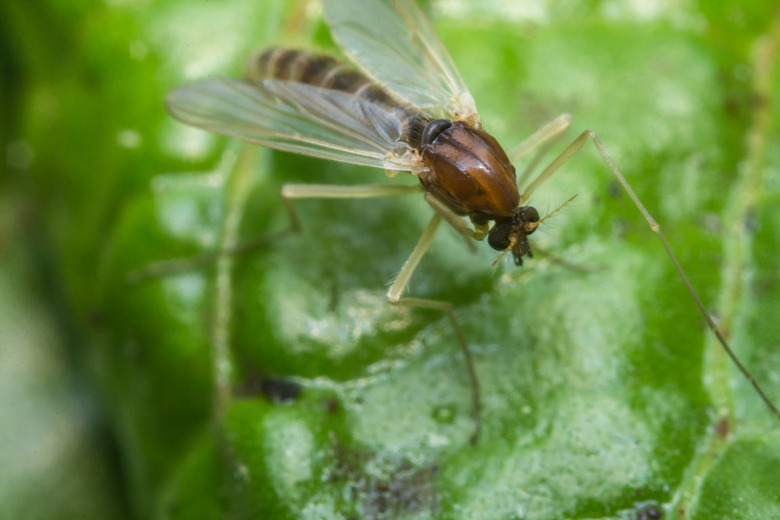How To Get Rid Of Sand Flies
Sand fly is the common nickname for various species of small biting insects. The tiny pests go by many other names, including sand gnats, no-see-ums, punkies, five-Os, and biting midges. No matter what you call them, these summertime pests deliver painful bites when they pierce your skin to suck out your blood.
Although sand flies don't normally reproduce indoors, they can become a problem inside homes if they have outdoor breeding sites near doors and windows. Fortunately, you can prevent sand flies from getting inside and eliminate the pests that manage to find their way into your home.
About Sand Flies
Tiny sand flies generally don't get larger than 1/16 inch long, which allows them to easily pass through standard window screens and slip through small cracks around doors and windows.
Sand flies need humid environments and, as their name implies, prefer sandy areas around beaches, lagoons, and mangroves. The females also lay eggs in moist soils around ponds, creeks, streams, lakes, and dripping air conditioners. Although larvae are active throughout the year, the adults become most active from June through August and normally feed around sunset and sunrise.
Using Insecticides Indoors
Spraying pesticides can offer fast, but temporary, relief. You'll need to repeat applications because the insecticides that are safe to use indoors don't have any residual effect. Use an aerosol spray containing pyrethrin to spot-treat any sand flies that you happen to see, but don't spray more often than once a day. Some homeowners prefer using pyrethrin sprays for space treatments. To treat the entire space:
- Make all people and pets leave the area.
- Close all doors and windows.
- Spray the product upward at a rate of five to eight seconds for every 1,000 square feet of space.
- Keep the treated area closed up for at least 15 minutes before opening the doors and windows.
- Allow the room to air out for at least 30 minutes before reentering.
- Repeat applications as necessary, but not more than once a day.
Warning
- Remove pet food and water dishes from the treatment area before spraying.
- Clean food prep surfaces after treatments.
- Reduce your risk of chemical exposure by wearing waterproof gloves, shoes and socks, long sleeves, long pants, goggles, and a face mask.
- Pyrethrin-based insecticides are toxic to fish and other aquatic life. Remove an aquarium from the treatment area or seal it up before spraying.
Increasing Air Flow
Because the bloodsucking insects are so small and such weak fliers, you can stop sand flies from feeding on you by creating a moderate breeze. Turn ceiling fans on high and set up table, box, window, and pedestal fans to increase air circulation throughout your house.
Excluding Sand Flies
You want to stop sand flies from getting in your house by sealing up all little cracks and gaps that allow entrance. Because the small pests can slip through standard 16-mesh screens, consider replacing window and door screens with those of 14-mesh or smaller screens. Repair damaged screens immediately.
Screen other entry points, such as ventilation holes in eaves, outdoor vents, and where cables run into the house. Use caulk to seal up smaller gaps, including those around doors and windows.
Brick homes often have "weep holes" that allow sand flies to enter homes. You don't want to completely seal up those holes because they help stop condensation from accumulating inside walls. Plug up weep holes with plastic or nylon scrubbing pads instead.
Cleaning Up Outside
Making your yard less attractive to sand flies helps prevent them from making their way inside. Because the pests are attracted to moisture, you need to get rid of all standing water around your yard. This might mean cleaning clogged gutters or pouring freestanding water out of flowerpots, birdbaths, old tires, and other containers.
Limit the amount of vegetation around your home to reduce moisture and increase airflow, both of which can keep the pests from hanging around. Mow lawn grass short, rake leaves, prune out dense shrubs, get rid of lawn thatch, and remove any mulch touching your home's foundation.
Sand flies are attracted to shiny, painted surfaces, perhaps because they think it's water. Rinse the pests off the exterior of your home with a strong stream of water from a garden hose. Do this around midday so the water doesn't attract even more biting pests to the area. Don't spray around dusk or dawn when the sand flies become active.
